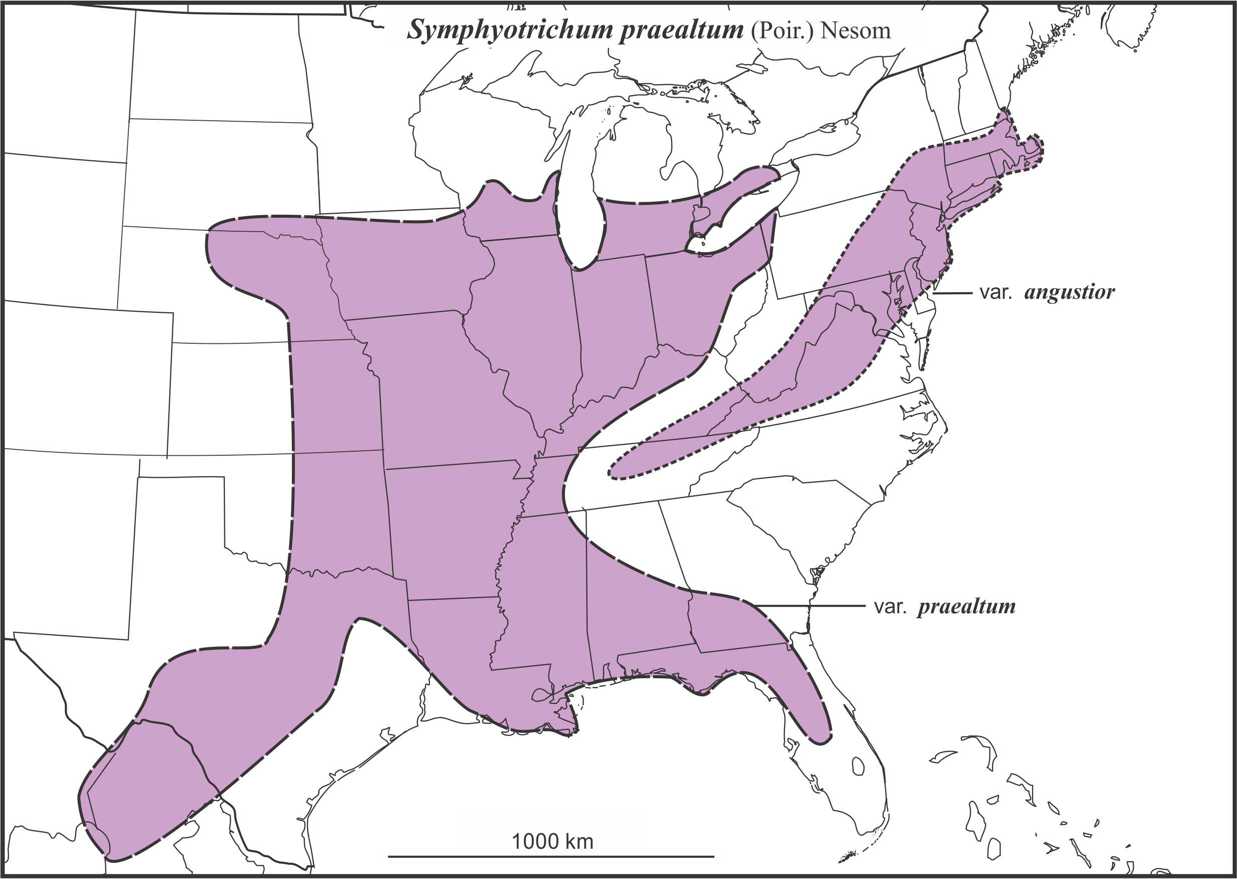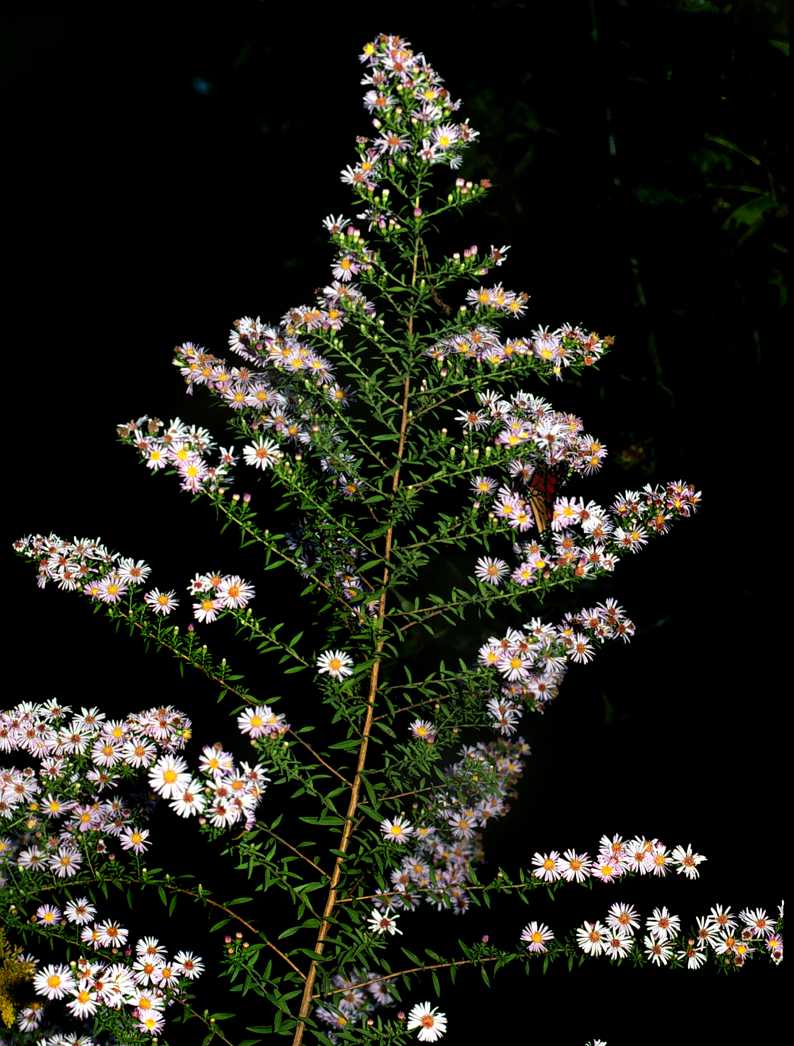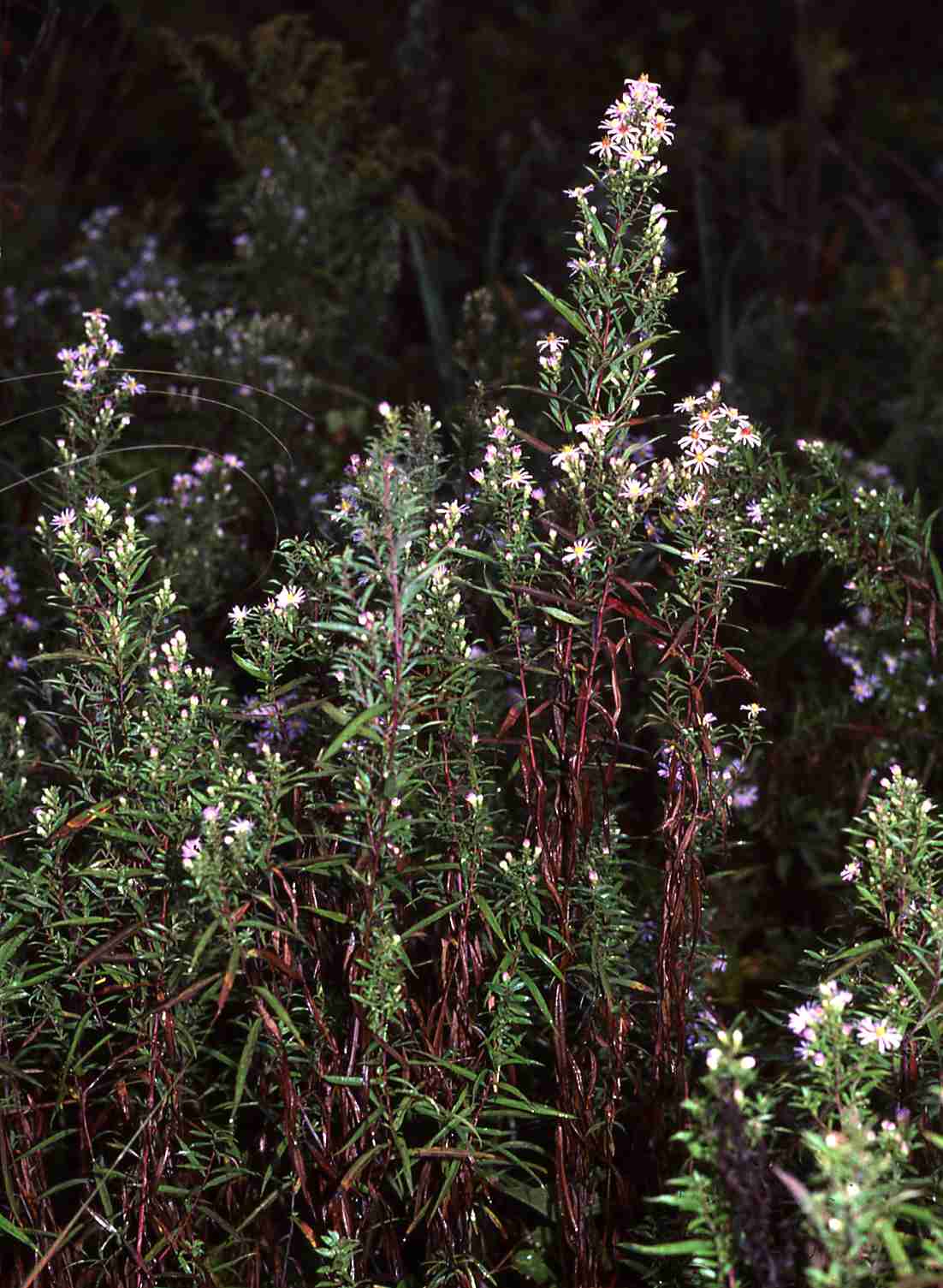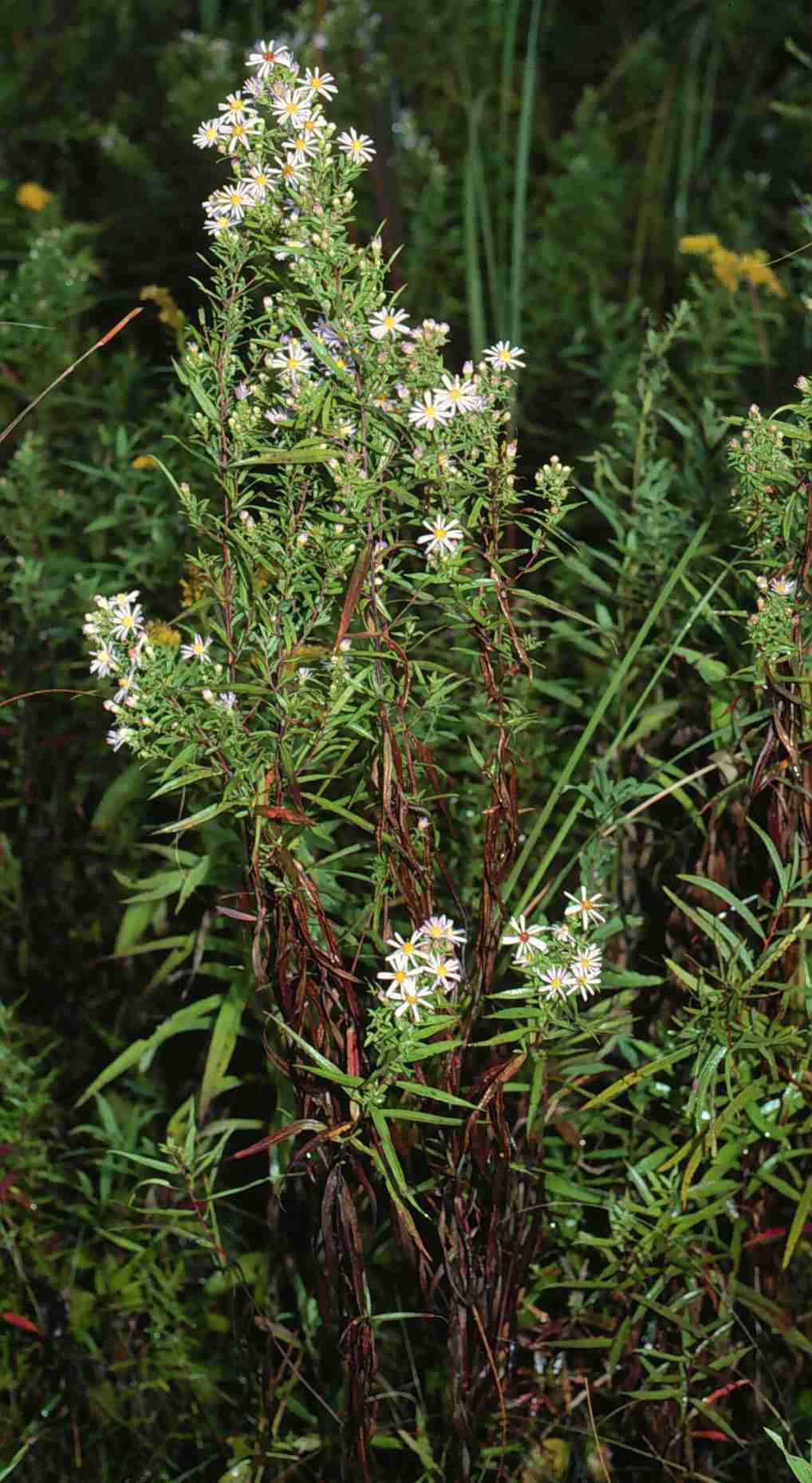Willowleaf Aster, Willow Aster
Symphyotrichum praealtum (Poir.) Nesom occurs in wet, loamy soils, wet prairies or meadows, lake and stream shores, oak savannas, open woods or thickets, fields, moist banks, ditches, roadsides, recent clearingsfrom Maine to southeastern South Dakota south to Florida and Texas and into northern Mexico (Brouillet et al. 2006; FNA). The Willowleaf Aster is most likely confused with Sy. lanceolatum and Sy. simmondsiibut is distinguished by its generally stiffer leaves that are progressively reduced distally, have adaxial waxy faces, and abaxial faces with well-marked, isodiametric areoles (vein pattern). Plants in the northeastern portion of the range (var. angustior) have been reported to be octoploid (2n=64); plants from elsewhere in the range (var. praealtum) have been reported to be mostly tetraploid (2n=32) with a few hexaploid (2n=48) and octoploid (2n=64) reports for Texas.

Nesom (1994b, 1997) and Semple et al. (2002) recognized several varieties within the species: var. praealtum [synonyms: Aster coerulescens DC., A. praealtus var. coerulescens (DC.) A. G. Jones, A. praealtus var. imbricatior Wiegand]; var. angustior (Wieg.) G.L. Nesom [synonym: A. praealtus var. angustior Wieg.]; var. nebraskense (Britton) G.L. Nesom [synonym: A. praealtus var. nebraskensis Britt.); var. subasperum (Lindley) G.L. Nesom [synonyms: A. praealtus var. subasper (Lindl.) Wieg., A. subasper Lindl.]; and var. texicola (Wieg.) G.L. Nesom (synonym: A. praealtus var. texicola Wieg.]. Some of these varieties deserve recognition (bold), but the validity of others needs confirmation via a detailed multivariate morphometric or DNA sequence analysis of the species and relatives.
Last revised 15 May 2025 by J.C. Semple
© 2025 J.C. Semple, including all photographs unless otherwise indicated
1-3. Symphyotrichum praealtum var. praealtum. 1-2. Large plant and L. Brouillet, inflorescence, Semple et al. 3830, Washington Par., Louisiana. 3-4. Shoots, Semple 6792, Windsor, Ontario.
Brouillet, L., J.C. Semple, G.A. Allen, K. Chambers and S. Sundburg. 2006. Symphyotrichum Nees. pp. 465-539. In Flora North America Editorial Committee, eds. Flora of North America. Vol. 20. Asteraceae, Part 2. Astereae and Senecioneae. Oxford University Press, New York.







